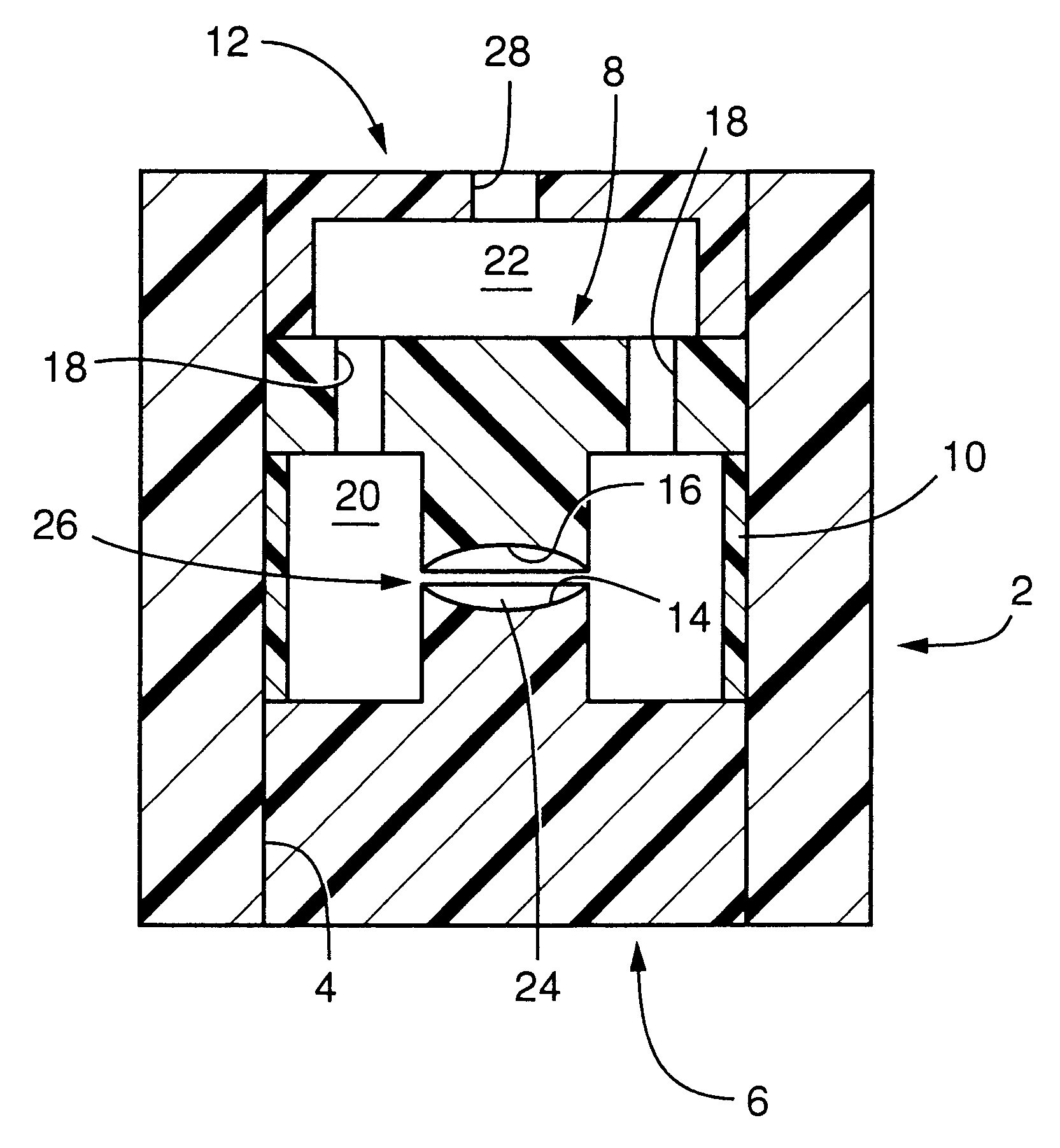Method of molding ophthalmic lens product, and mold assembly used in the method
a technology of ophthalmic lenses and molds, which is applied in the direction of foundry moulding equipment, instruments, foundry patterns, etc., can solve the problems of not providing the intended contact lens with high configuration accuracy, the optical surface of the lens product does not have high configuration accuracy, and the quantity of monomer composition supplied to the mold cavity is not sufficien
- Summary
- Abstract
- Description
- Claims
- Application Information
AI Technical Summary
Benefits of technology
Problems solved by technology
Method used
Image
Examples
Embodiment Construction
To further clarify the concept of the present invention, there will be described one example of the invention. It is to be understood that the present invention is not limited to the details of the illustrated example.
A plurality of ophthalmic lens products were prepared by using respective mold assemblies shown in FIGS. 1 and 2, in the following manner.
Initially, a monomer composition (30) was prepared by using 70 parts by weight of phenoxyethyl acrylate, 30 parts by weight of ethyl acrylate, 15 parts by weight of 2-hydroxyethyl methacrylate, 4 parts by weight of butanediol diacrylate as the cross-linking agent, and 0.5 part by weight of 2,2'-azobis(2,4-dimethyl valeronitrile) as the radical polymerization initiator. The thus prepared monomer composition (30) was introduced into the upper chamber (22) of each mold assembly, so that the monomer composition (30) is fed into the intermediate chamber (20) via the through-holes (18), and is then fed into the mold cavity (24) via the cir...
PUM
| Property | Measurement | Unit |
|---|---|---|
| Temperature | aaaaa | aaaaa |
| Pressure | aaaaa | aaaaa |
| Pressure | aaaaa | aaaaa |
Abstract
Description
Claims
Application Information
 Login to View More
Login to View More - R&D
- Intellectual Property
- Life Sciences
- Materials
- Tech Scout
- Unparalleled Data Quality
- Higher Quality Content
- 60% Fewer Hallucinations
Browse by: Latest US Patents, China's latest patents, Technical Efficacy Thesaurus, Application Domain, Technology Topic, Popular Technical Reports.
© 2025 PatSnap. All rights reserved.Legal|Privacy policy|Modern Slavery Act Transparency Statement|Sitemap|About US| Contact US: help@patsnap.com



